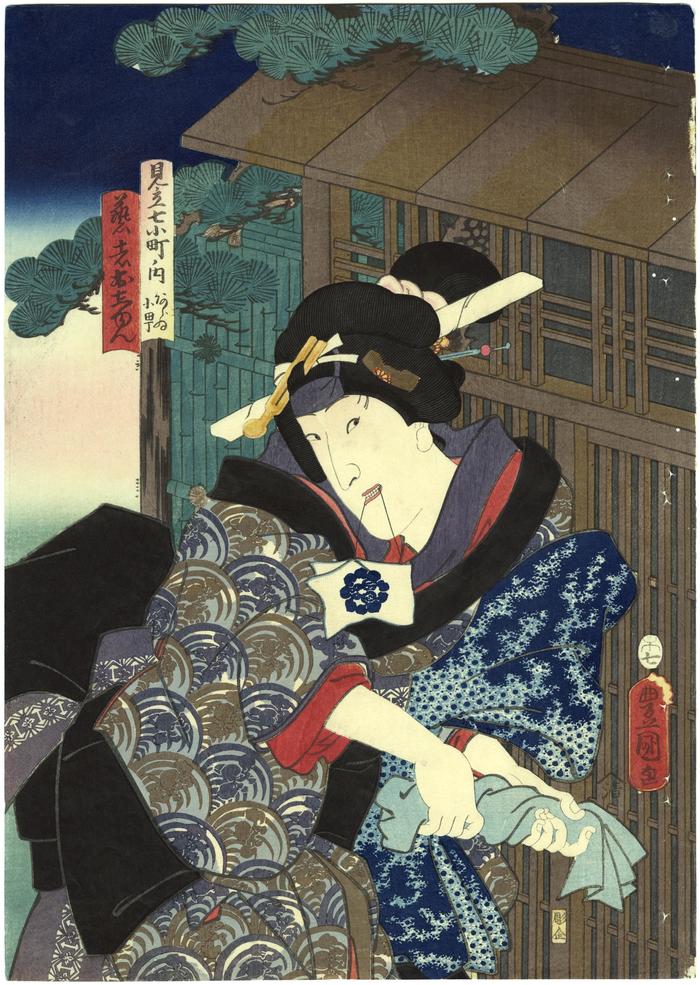Utagawa Kunisada (歌川国貞) / Toyokuni III (三代豊国) (artist 1786 – 01/12/1865)
Komachi Washing (Arai Komachi - あらゐ小町): Iwai Kumesaburō III (岩井粂三郎) as the geisha Oshun (芸者おしゆん) from the series Matches for the Seven Komachi Plays (Mitate Nana Komachi no uchi - 見立七小町ノ内)
07/1858
10.125 in x 14.375 in (Overall dimensions) Japanese woodblock print
Signed: Toyokuni ga (豊国画)
Publisher: Shimizuya Naojirō (Marks 468 - seal 01-081)
Carver: Hori Kin (彫金)
Date: 7/1858
Museum of Fine Arts, Boston
Waseda University
National Institute of Japanese Literature (via Cultural Japan)
Art Gallery of Greater Victoria
Copy of this print from the David-Weill collection stolen by the Nazis
Museum für Kunst und Gewerbe, Hamburg
Victoria and Albert Museum From the series 'Matches for the Seven Komachi Plays' (Mitate Nana Komachi no uchi - 見立七小町ノ内). This print represents a scene performed in 1858, 7th month.
John Fiorillo wrote in Andon 63 of the story of Komachi washing the manuscript: "...based loosely on the Nō play Sōshi arai, which involves a poetry competition (uta awase) at the Imperial Palace. Komachi's rival, the poet Ōtomo no Kuronushi, realizes he cannot compete with her talent and devises a plot to discredit her. He secretly listens to her practicing her poem, then inscribes it in the manuscript copy in the palace library of the Imperial poetic anthology, the Man'yōshū ('Collection of ten thousand leaves'). When Komachi recites the poem the next day, he accuses her of plagiarism, and initially the courtiers are suspicious because her poem is indeed found inscribed in the Man'yōshū. Komachi, however, recognizes that the poem is written in an ink of a different color and she asks that the manuscript page be washed in a stream. The Emperor agrees and the deception is uncovered when only the newer ink of the forged poem washes away, the original inscriptions holding fast. Kuronushi in his shame decides upon suicide, but Komachi responds compassionately and prevents him from ending his life. This non-historical incident surely offers a sympathetic characterization of Komachi at odds with the standard image of the cruel poetess."
Shimizuya Naojirō (清水屋直次郎) (publisher)
Iwai Kumesaburō III (三代目岩井粂三郎: from 11/1832 to 1/1864) (actor)
actor prints (yakusha-e - 役者絵) (genre)
mitate-e (見立て絵) (genre)
